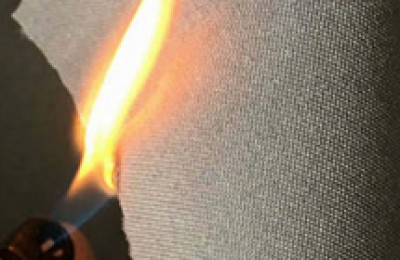Overview:
External crude oil pulled back again last week, and the U.S. crude oil 11 contract had a weekly decline of 2.7%, closing at $40.04. The Brent oil 12 contract’s weekly decline was greater than that of U.S. oil, which was 3.25%, closing at $42.26. External crude oil prices have made an overall correction this month. The domestic SC crude oil 11 main contract fell more than the external market during the week, with a weekly increase of 4%. It rebounded slightly by 0.64% in the night session, with the internal market weaker than the external market for two consecutive weeks.
European epidemic broke out again. The epidemic broke out again in the UK and France. As of the reporting period, the cumulative number of confirmed cases in the United States reached 7.2889 million, with nearly 210,000 deaths. The epidemic situation in India, Brazil, and Russia is still not optimistic. Among them, the cumulative number of confirmed cases in India has reached more than 6 million, and the number of new cases in a single day is still close to 90,000.
The weaving operating rate increased slightly last week. Filament production continued to decrease, and the polyester load dropped slightly to 91.80% as of last Friday.
PTA:
The average price of PTA spot prices fell sharply last week , as of last Friday it was 3,335 yuan/ton. The main processing gap of TA disk widened slightly to 808 at the beginning of the week, and narrowed significantly in the second half of the week to 728 last Friday. TA’s spot processing gap widened significantly to 618 at the beginning of the week and then narrowed significantly during the week, reaching 537 as of last Friday. The PX-NPT spread is still fluctuating at a low level, reaching $138 as of last Friday. BP’s 2.35 million-ton unit unexpectedly shut down, and the PTA load dropped to 86.6% last week.
Ethylene glycol:
As of September 21, East China The MEG port inventory in the main port area is approximately 1.352 million tons, a slight decrease of 48,000 tons from the previous period, and the decrease is lower than the previous week. According to shipping reports, from September 21 to September 27, the total arrival volume of the four major ports is expected to be 241,000 tons, which is above neutral. Shipments from Zhangjiagang’s mainstream reservoir area dropped again in September. Shipments have been poor recently and showed signs of improvement over the weekend. It is expected that port inventory may continue to be destocked, with the magnitude continuing to decline month-on-month. Sinochem Quanzhou, a new domestic installation, is currently operating at 50% to 60% capacity, and the load is still increasing. Domestic supply continues to rebound (stocks increase, new devices are put into production), overseas devices have gradually restarted, and overseas supply has rebounded slightly month-on-month.
Cost and Profit
1 Raw Material Market
1.1 Crude oil, NPT, PX
Based on cfr Japan naphtha, naphtha (cfr Japan) fell slightly last week , as of last Friday it was US$406.5/ton. External crude oil prices pulled back again last week, with the U.S. crude oil 11 contract losing 2.7% on a weekly basis to close at $40.04. The Brent oil 12 contract’s weekly decline was greater than that of U.S. oil, which was 3.25%, closing at $42.26. External crude oil prices have made an overall correction this month. The price difference between naphtha and Brent crude oil first narrowed to US$87.74 during the week, and then widened significantly to US$98.39 last Friday. The price difference between naphtha and WTI crude oil followed a similar trend, first narrowing to US$99.72 during the week and then widening again last Friday. It widened to around $110.66. The price of PX (cfr China) dropped sharply to US$536 in the first half of the week compared with last week, and rose to US$544/ton in the second half of the week. The PX-NPT spread is still fluctuating at a low level, reaching $138 as of last Friday. PX Asia’s load increased slightly, and China’s operating rate basically remained stable.
2 Cost and profit changes
The average spot price of oil-based ethylene glycol fell sharply last week from the previous week, reaching 3,665 yuan last Friday, and fell another 30 yuan to 3,635 yuan last Sunday. The average price during the week is only 3,693 yuan, which is equivalent to a coal contract price of approximately 3,493-3,543 yuan. The chart is based on the nearby spot price – 3,500 yuan/ton. Coal-based load has rebounded for 6 consecutive weeks, and the loss of coal-based ethylene glycol has intensified again week-on-week. The recovery of coal-based load may be blocked in the later stage. The cash flow loss of externally produced ethylene glycol has once again worsened to around -$94. Naphtha to ethylene glycol lost about US$11 again. The cash flow loss of the methanol MTO production route continued to increase last week to 1,353 yuan/ton. Losses in various ethylene glycol process routes have intensified again since last week.
Supply
1 Equipment maintenance status
Starting from September 1, 2020, the polyester production capacity base has been revised upward to 62.05 million tons. Yisheng Hainan’s 250,000-ton (supporting production of polyester bottle flakes) and Nantong Hengke’s 200,000-ton (currently temporarily producing glossy slices) devices. Last week, polyester equipment had some production cuts or maintenance, and the load was slightly reduced. As of this Friday, the preliminary calculation of the domestic polyester comprehensive load is 91.8%.
Table 1: Recent major device changes in polyester:
Data source: CCF Zhongzhou Energy and Chemical Research So
PTA domestic equipment: Zhejiang Huabin Petrochemical’s 1.4 million-ton unit reduced its load on 9.16 and increased its load on 9.21. It is currently operating normally. The BP2.35 million ton unit was shut down and the PTA load dropped to 86.6%. The 1.2 million ton device in Sanfangxiang restarted around 9.25 and is currently increasing its load. The 700,000-ton polyester plant in Zhejiang Liwan restarted on September 26.
Table 2: PTA’s recent major device changes:
Data source: CCF Zhongzhou NenghuaResearch Institute
Ethylene glycol plant: The overall load of ethylene glycol and the start-up of coal-based plants continued to rise sharply last week. As of September 24, the overall operating load of domestic ethylene glycol was 66.40%, of which the operating load of coal-based ethylene glycol was 55.83%. Two of Xinhang Energy’s lines have been restarted, and the remaining one is still undergoing technical renovation; the Red Sifang 300,000-ton unit has been restarted and the load is being increased. The load of Inner Mongolia Yankuang’s 400,000-ton unit has rebounded to around 90%.
Three sets of installations in the United States with a total of 1.32 million tons were temporarily shut down on 8.26. A 700,000-ton installation extended its shutdown time to 4-6 weeks due to the hurricane, and the other 34 The 10,000-ton unit has restarted normal operation, and the restart of the third 280,000-ton unit is pending. A 360,000-ton unit in South Asia in the United States has been shut down since September 8 due to equipment failure and is expected to be overhauled in about a month. Canada’s Dow 400,000-ton unit has now warmed up and restarted normally; the 360,000-ton unit in South Asia No. 3 is warming up and restarting. Recently, overseas supply has rebounded month-on-month.
Table 3: MEG’s recent major device changes:
Data source: CCF Zhongzhou Energy and Chemical Research Institute
Commissioning status of new equipment: Xinjiang Tianye’s 600,000 tons/year Shihutan project, of which 200,000 tons discharged a small amount of high-quality products; the 400,000 tons discharged last week were partially qualified Product, the device is still under debugging. Sinochem Quanzhou’s new 500,000-ton/year MEG unit is currently operating at 50% to 60% capacity, and the load is still increasing; Shanxi Woneng Chemical Technology Co., Ltd.’s 300,000-ton/year new syngas-to-MEG unit is currently successfully producing polyethylene. Ester grade ethylene glycol is expected to be able to run at increased load this week. The new 500,000-ton unit of Zhongke Refining and Chemical Co., Ltd. has currently completed its reverse operation. It plans to start up the ethylene cracking ease near this weekend, and it is expected to have product output by the end of the month.
2PTA Inventory
PTA Conversion Society Total inventories ended four consecutive weeks of decline, and the overall inventory rebounded slightly. Warehouse receipts canceled last week were registered again one after another. Warehouse receipts rebounded sharply during the week, PTA factory inventory dropped slightly, polyester factory raw material inventory basically remained stable, and TA inventory converted from polyester finished product inventory rebounded slightly except for the decline in filament.
3 Ethylene glycol import and port inventory
As of September 21, the MEG port inventory in the main port area of East China was approximately 1.352 million tons, a slight decrease of 48,000 tons from the previous period, and the reduction was lower than the previous week. According to shipping reports, from September 21 to September 27, the total arrival volume of the four major ports is expected to be 241,000 tons, which is above neutral. Shipments from Zhangjiagang’s mainstream reservoir area dropped again in September. Shipments have been poor recently and showed signs of improvement over the weekend. It is expected that port inventory may continue to be destocked, with the magnitude continuing to decline month-on-month.
Requirements
1 Polyester
1.1 Polyester operating rate and equipment changes
Starting from September, Polyester production capacity is adjusted to 62.05 million tons/year. As of last Friday, the polyester load continued to decline slightly to 91.80%. It is expected to continue to decline and is still at a relatively high level. Among them, the load of polyester filament dropped slightly by 0.3% from the previous week to 75.60%; the load of polyester bottle flakes rebounded by 1.1% to 83.70%; the operating rate of direct spinning polyester staple remained stable at 99.30% from the previous week, the highest level in history . The operating rate of polyester filament yarn is only higher than the second-lowest level in the same period in the past year in 2018; the operating rate of polyester bottle flakes is still only lower than the second-highest level in the same period in the past year in 2017.
1.2 Polyester Inventory
As of Last Friday, the equity inventories of POY, FDY and DTY in Jiangsu and Zhejiang polyester factories were 18.3, 19.1 and 26.9 days respectively. Filament stocks have declined. Among them, FDY stocks have dropped significantly by 1.5 days from last Friday, DTY stocks have dropped significantly by 1.8 days from last Friday; POY stocks have dropped significantly by 1.1 days from last Friday. Polyester staple fiber inventory continued to increase by 1.3 days to 7.6 days last week (polyester staple load remained near full load, and profits were the best among polyester products). Last week, the overall shipments from polyester bottle flake factories were average, and the average inventory in inventory remained at 30 days or slightly above. The inventory of polyester staple fiber is still at the equilibrium level for the same period in the past; the inventory of polyester filament and polyester bottle flakes both maintain the highest level for the same period in the past. Among them, the FDY inventory is the second highest level for the same period in the past.
2 Terminal situation
Last week The operating rates of looms and texturing in Jiangsu and Zhejiang increased. As of now, the operating rates of looms and texturing are at 79% and 82% respectively.
The inventory days of gray fabrics in sample weaving enterprises in Shengze area are currently reduced to 44 days, and the extent of destocking is expected to be limited in the future. The average monthly transaction volume of China Textile City in July was 8% higher than the same period last year. It fell sharply in August, 31% lower than last year. There may not be an obvious distinction between off-peak and peak seasons this year, and there may be pulse-type trading volume before the holidays.
There may not be an obvious distinction between the off-peak and peak seasons, and there may be pulse-type trading volume before the holidays. </p







